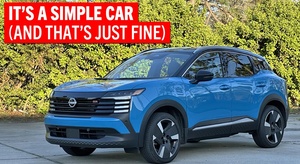I have all of next week off of work, and I decided to jump into my project with both feet.
the 3SGTE Supra is starting this weekend with the chassis. First of all, I am going to strip everything else down and learn to stitch weld.
I only have access to a buzz box...is that a bad thing, or should I be able to weld it with that? I am kind of a newb to welding, so I guess it's kind of a learning tool also.
I have done a little reading on some poser forums, so I thought I would ask the ultimate authority.
I have been read that you should hang some weight off of the four corners of the car. Then, you need to wire wheel the seams that you want to weld. I have also read that you should lay a quarter inch stitch every 2 inches or so. Is there a benefit to stitch welding versus straight seam welding? Why would you not want the seam to be completely welded shut as opposed to stitched?
Any other pointers?
I'd say... slow down. Take a breath.
- Learn to weld well on the same thickness and make sure you can do it vertical too.
- The tar you grind off the face is also present inside the chassis and will catch fire and fill the house with smoke. Make sure you have a way to smother it and ventilate the fumes. Also... obviously, pay attention to where the wiring and fuel lines are.
- Welding with a gas mig will be easier on thinner metal than buzz box - especially if you don't know how to weld at all.
- Every weld you make will rust within an hour - clean and primer it as soon as it's cooled enough.

IWELDIT
New Reader
11/19/10 9:54 a.m.
It will take you a week to strip the car and get it preped to be welded.And I do not recomend a buzz box to seam weld the car. Use a MIG. Also I would say 2" of weld on 6" centers.
But this depends on what part of the car you are welding.
Just my 2 cents.
If by "buzz box" you mean 110V flux core, it will weld sheetmetal together easy. BUT, for even easier welding, convert to regular wire and get a bottle of gas. You will have a cleaner, stronger weld in the end.
As for weights and other crap, I'd rather have a tape measure and level and ensure that the chassis is square and level then anything else. Nothing sucks worse then having a crooked chassis that is solidly welded together.
NEVER lay a continous bead over 1" long, IMO. THEN skip over at least 6" and start again. By the time you have finished various pieces in the corner where you can't see skipping to a different area, start over where you started. If you lay the continous bead you induce warp from overheating then cooling contraction the metal. You then get a crooked chassis which can really never be "fixed".
Oh and prep, prep, and prep. Prep is the key to getting good welds as well as practice, practice, and practice.
Brian
i read buzz box to mean stick welder.
Giant Purple Snorklewacker wrote:
2. The tar you grind off the face is also present inside the chassis and will catch fire and fill the house with smoke. Make sure you have a way to smother it and ventilate the fumes.
Repeating this since I believe it's the most difficult part of welding on a unibody car. Sealer and body wax will drip from between body seams and make it impossible to weld cleanly. I'm not sure how the pros are getting around this other than dipping the entire chassis. Possibly pre-cooking the seam with a torch?
Yeah, I meant stick welder. As far as prep, the car is pretty well stripped as it is.
I have some welding experience, but mostly with it set up for me. I can lay a bead, but it may not be the prettiest one.
Okay, so how do I go about leveling a chassis with a tape measure? Wouldn't it have to be on a level table for that to work?
Also, what needs to be done for prep?
GPS wrote:
Repeating this since I believe it's the most difficult part of welding on a unibody car. Sealer and body wax will drip from between body seams and make it impossible to weld cleanly. I'm not sure how the pros are getting around this other than dipping the entire chassis. Possibly pre-cooking the seam with a torch?
That's something to keep in mind, thanks!

YaNi
Reader
11/19/10 12:49 p.m.
I use a stiff twisted wire brush on an angle grinder to remove 90% of the paint and seam sealer. I then burn off everything else with a propane/map gas torch. You will get contamination from the seam sealer if you don't burn it all out; you can't get it all out with the grinder since some of the sealer gets in the crack between the two pieces of metal. I then quickly run the grinder over it again to remove the soot, and then clean it with isopropyl alky (you can also substitute your drink of choice).
Now you're ready to weld. I like 'Twenty Gauge' MIG wire by JW Harris. It seems to weld Jap steel better than a standard ER70S-6 wire. I only use spotwelds, but by overlapping them they look similar to a tig bead. Laying beads on sheet metal is asking for trouble (even if its a flanged joint). Once the entire joint is welded you should atleast epoxy/etch prime the steel so it doesn't rust. You will need to repaint the ENTIRE car after. Be prepared for many tens of hours to add an unknown increase in stiffening.
Is the formatting in this thread totally borked for anyone else?
Is it even worth taking on this task?
I'd assume a track car build like this will also have a nice 8-10 point rollcage? If so, will the seam welding really provide any quantifiable increase in stiffness?
not an engineer, and know nothing about building fast race cars, just curious
In reply to ReverendDexter:
Yup. Working on it now. Somebody forgot to close their quote, and then it got copied.
{edit-} Better now.
z31maniac wrote:
Is it even worth taking on this task?
I'd assume a track car build like this will also have a nice 8-10 point rollcage? If so, will the seam welding really provide any quantifiable increase in stiffness?
*not an engineer, and know nothing about building fast race cars, just curious*
That assumes you have a welder of chassis parts capable of looking at a vehicle and knowing where to place the bars properly, instead of adding 200# of useless weight. I have seen many a car with the left wheel raised 3' off the ground but the right one is still on the ground while at the drag strip. 3" is really even too much, IMO.
Personally, I'll stick with the saying, "You can never make a car too stiff."
Brian
What I don't see in your request for suggestions or info is what you are planning on doing to the car. Nowhere do I see that what your plans for the car are, installing a roll bar or roll cage, seam welding? A proper Gas MIG welder is what you need. Whith a buzz box you can do exhaust work or repair trailers but not for automotive work.
Years ago my father bought a used gas engine powered buzz box. Sold it a few years later as he found that there wasn't that many jobs he could use it to weld with it. Ended up using Ox/Ace torch most of the time. I bought a MIG after he passed away. I now also have a TIG.
Going to Northern to grab some supplies today. What should I get?
Self etching primer.
Twisted wire wheel.
A couple cans of propane for the torch.
What am I forgetting?

JFX001
SuperDork
11/20/10 8:25 a.m.
Paint scraper, safety glasses, rubber gloves, paper towels, patience.
Platinum90 wrote:
Going to Northern to grab some supplies today. What should I get?
Self etching primer.
Twisted wire wheel.
A couple cans of propane for the torch.
What am I forgetting?
the cashews they sell now up toward the register are really tasty 
Platinum90 wrote:
Going to Northern to grab some supplies today. What should I get?
Seriously? A MIG welder. I think you are underestimating the difficulty of trying to weld thin, dirty sheet metal with a stick welder. Add to that the fact that you are going to be welding in difficult areas.
You do not have the right tools for this job.
Honestly, how is welding sheetmetal different than welding exhaust? Stick welders will do one, but not the other? Why?

Javelin
SuperDork
11/20/10 9:39 a.m.
Because tubing is structurally strong (which is why roll bars are round). Also exhaust is easy to get to and/or take out to weld, and if you warp it it really won't matter.
The berkleying structure of a car is 1000% vital to it being able to do anything! You're talking about welding up sheetmetal that has bizarre curves, isn't very structurally strong where you are welding it, is thin, and is stressed. BIG difference!
It's like asking why nail clippers are OK for clipping nails but not for an appendectomy. 
Okay. You talked me out of it for now. Is there anywhere that will rent a mig? I can't see spending 800 dollars on a welder I will use for a week.
Craigslist. buy and sell.
even a basic mig would be a big improvement in control on small sheetmetal over , but i wouldnt buy one that you cant at least add shielding gas in the future.
for the price my Hobart Handler 140 is 110v, flux or gas wire, under 500 new (without tank/gas) and nicely portable, especially with flux wire. i cant speak to the actual performance of flux wire on anything thin though as ive only used flux on thick steel outside and shielding gas on sheetmetal projects. definitely check out CL.
since you plan on stitch welding a whole car by yourself (a pretty huge amateur undertaking, bravo btw!), i'm sure you can see the implied future projects opened up to you by having a more versatile welder? i use mine all the time for odd projects.






































